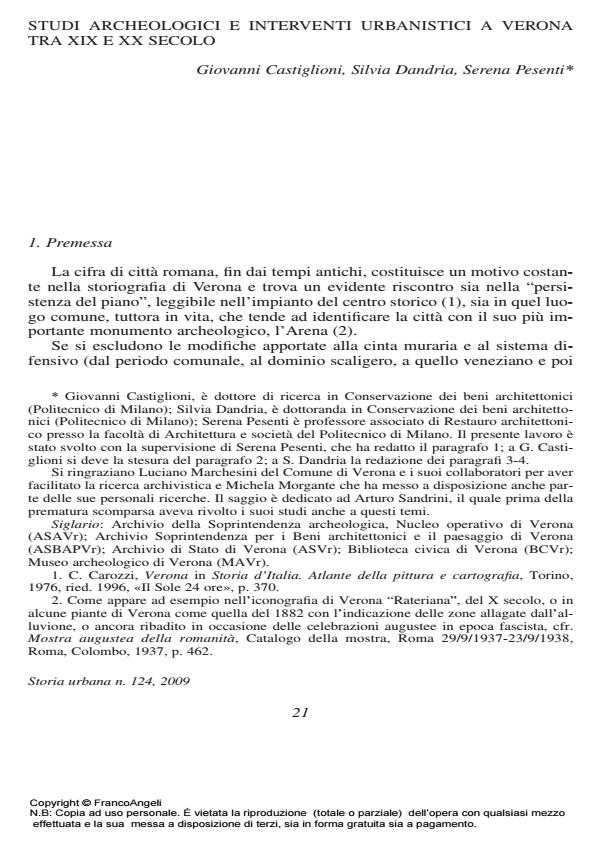Studi archeologici e interventi urbanistici a Verona tra XIX e XX secolo
Journal title STORIA URBANA
Author/s Giovanni Castiglioni, Silvia Dandria, Serena Pesenti
Publishing Year 2010 Issue 2009/124
Language Italian Pages 42 P. 21-61 File size 9587 KB
DOI 10.3280/SU2009-124002
DOI is like a bar code for intellectual property: to have more infomation
click here
Below, you can see the article first page
If you want to buy this article in PDF format, you can do it, following the instructions to buy download credits

FrancoAngeli is member of Publishers International Linking Association, Inc (PILA), a not-for-profit association which run the CrossRef service enabling links to and from online scholarly content.
Archaeological studies and urban interventions in Verona between 19th and 20th century - Verona, Arena, Roman theatre, urban planning Over the centuries, the city of Verona has been characterized by the original foundations plan from the Roman era. Urban planning in the 19th and 20th centuries was in fluenced by the framework of the streets based on an orthogonal grid, the walls, with their system of urban gates for access to the city, and the imposing presence of the Arena. In the 19th century, a renewed attention to Roman monuments and restoration involved interventions on the surrounding urban environment. This meant that the amphitheatre became the fulcrum of architectural projects for the new city center, Piazza Bra, with its new monumental buildings. On the other side of the city, where monumental ruins of the Roman theatre were discovered buried below the city itself, an entire hillfront was transformed into an archeological park. Additionally, in the first half of the 20th century the "traces" of Roman Verona were listed among the principal references for the adaptation of the historical city center in the planning of the contemporary expanding city. After the Second World War, reconstruction plans tried to modernize the city and, at the same time, keep the historic urban structure. This choice was confirmed, according to the Superintendence, in the reconstruction of the intra moenia areas which - as they thought - should relate to environmental aspects. In this way, it has been possible, in spite of all the changes, to keep the traditional features of the city.
Giovanni Castiglioni, Silvia Dandria, Serena Pesenti, Studi archeologici e interventi urbanistici a Verona tra XIX e XX secolo in "STORIA URBANA " 124/2009, pp 21-61, DOI: 10.3280/SU2009-124002